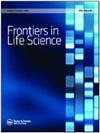纳米技术用于人类食品:进展与展望
Q1 Biochemistry, Genetics and Molecular Biology
引用次数: 23
摘要
纳米技术是农业和食品科学中一个令人兴奋和迅速崛起的领域。纳米材料在传感和检测应用中的应用正在迅速增长,为检测食品、饮料和其他产品中的化学和生物污染物提供了替代传统技术的方法。纳米技术具有创新农业、饲料和食品部门(进一步表述为农业/饲料/食品)的潜力。已经上市的应用程序的特点是带有抗菌纳米颗粒的原始产品包装,以及纳米封装的农用化学品和营养物质。许多纳米产品目前正在研究和开发中,并可能在未来引入该行业。与任何其他结构化产品一样,为了获得市场制裁,应用程序需要证明此类新产品的安全使用,而不会对消费者或环境造成不必要的安全风险。在这篇综述中,我们总结了纳米技术在食品和营养保健品方面的应用,同时也指出了突出的挑战。本文章由计算机程序翻译,如有差异,请以英文原文为准。
Nanotechnology for human food: Advances and perspective
ABSTRACT Nanotechnology is an exciting and rapidly emerging field in agriculture and food science. The usage of nanoscale materials in sensing and detection applications is growing quickly, providing alternative methods to conventional techniques for detecting chemical and biological contaminants in foods, beverages, and other products. Nanotechnology has the potential to innovate the agricultural, feed, and food sectors (further stated as agri/feed/food). Applications that are marketed already feature original product packaging with antimicrobial nanoparticles, and agrochemicals and nutrients that have been nano-encapsulated. Many nano-enabled products are presently under research and development, and may be introduced into the industry in the future. As with any other structured product, for market sanctions, applications need to prove the safe use of such new products without posing unwarranted safety risks to the consumer or the environment. In this review, we summarize the uses of nanotechnology related to food and nutraceuticals, while also identifying the outstanding challenges.
求助全文
通过发布文献求助,成功后即可免费获取论文全文。
去求助
来源期刊

Frontiers in Life Science
MULTIDISCIPLINARY SCIENCES-
CiteScore
5.50
自引率
0.00%
发文量
0
期刊介绍:
Frontiers in Life Science publishes high quality and innovative research at the frontier of biology with an emphasis on interdisciplinary research. We particularly encourage manuscripts that lie at the interface of the life sciences and either the more quantitative sciences (including chemistry, physics, mathematics, and informatics) or the social sciences (philosophy, anthropology, sociology and epistemology). We believe that these various disciplines can all contribute to biological research and provide original insights to the most recurrent questions.
 求助内容:
求助内容: 应助结果提醒方式:
应助结果提醒方式:


